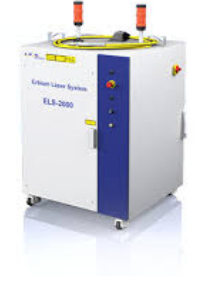
Posted By: Southern Fabricating Machinery Sales | Posted On: March 10, 2021
CO2 Laser vs Fiber Laser: Pros and Cons
CO2 vs. Fiber Laser, which is better? This has been a common discussion in manufacturing circles for several years now as Laser purists insist CO2 was the better technology and others promoting the new innovations of Fiber Lasers, insist just the opposite is true. But who is right? Which technology is better and how does it affect your bottom line?
A clue to the answer is the realization that most manufacturers still offer BOTH CO2 and Fiber Laser Technologies in their machinery product offering. They do so as they have seen there is a marked difference in the technologies, capabilities and more importantly their performance in certain materials, thicknesses and special applications. Ultimately it comes down to the material you are cutting type and thickness of it.
In a previous article, Why the Kilowatt is not the King, we discovered that Fiber Lasers get more power from the resonator, or power source, to the cutting head. They achieve this by not having to reflect the beam off of mirrors and refocus the beam through a myriad of lenses, thereby maintaining all of the power being produced at the source. CO2 Lasers however gain an edge when it comes to material types and the flexibility to adapt to a wider range of materials.
What Is a Fiber Laser?
A Fiber Laser is simply a term used for the fiber optic delivery method of bringing the intense and amplified light source to the cutting head of the laser machine. The term does not specify how the light source is created (which is different then that of CO2 resonators). The fiber beam delivery method greatly simplified the process of building a laser and as such many machines came to the market at greatly reduced prices.
How Does a Fiber Laser Work?
The fiber receives the light source from the resonator of the laser cutting machine and delivered it to the cutting head which is controlled by the CNC. In the cutting head the laser is emitted form the end of the fiber optic cable and refocused through a series of focal lenses into a near perfect dot on the material's surface. Purged with cutting gasses such as NO2 and O2 around the laser the material to be machined is quickly vaporized in the intense heart and blown away as particles of dust.
What Is a CO2 Laser?
A CO2 laser really refers to the method of generation of the laser itself. A resonator, purged with CO2 gasses under high velocity (turbos or blowers) used a variety of methods to split the ions of light particles (typically RF or DC excitement) causing the light particles to collide into each other and split at an even greater intervals.
How Does a CO2 Laser Work?
Once the CO2 Resonator has created enough light it is delivered in a different manner then the fiber optic method. The beam is delivered via a process of reflection and refocusing down a convoluted path called a "beam path delivery system" which is purged with protected "laz gasses" to keep the path pure and clean and free from dust that would interfere with the delivery of the full intensity of the laser. Once the laser is reflected to the cutting head it is refocused and emitted in the same manner as the Fiber machines would utilizing a series of lenses to refocus and a shield of high velocity cutting gasses to purge the machined path.
CO2 vs. Fiber Laser: Pros and Cons of Each
Advantage CO2 Laser
- Finish: CO2 Lasers generally produce better edge quality on plate stainless and aluminum workpieces.
- Flexibility: CO2 Lasers offer the flexibility across a range of laser applications including non-metals.
Disadvantage CO2 Laser
- Operating Costs: Aside from the mirrors, lenses bellows and las gasses required to keep the beam path delivery system pure and clean, the power consumption costs are 70% higher as the CO2 Resonator, Blower, chiller etc. require much more power.
- Maintenance: All of the above mentioned components of the beam path delivery system require maintenance which can not only be disruptive to manufacturing but also very costly.
- Speed: In thin materials a CO2 Laser just can’t compete against a fiber. As an example a 4KW CO2 in 16 GA Mild Steel using N2 as a cutting gas has a recommended cutting speed of just 260IPM whereas an equally equipped Fiber Laser has a cutting speed of Approximately 1,417 IPM, quite a difference.
Advantage FiberLaser
- Investment Costs: As the solid state laser technology becomes increasingly more popular the cost of the systems are declining. As an example a well equipped domestic built fiber laser cutting system can be purchased starting at well under 200K
- Maintenance: Without the Beam Path Delivery System and its myriad use of mirrors, bellows, gasses etc. the Fiber laser (specifically the solid state resonator type) has greatly reduced the amount of maintenance required and as such the costs associated with that maintenance.
- Speed: In the race of Fiber Lasers vs. CO2 Lasers in thin materials there is simply no comparison. Fiber is double to triple the speed in gage materials.
- Operating Costs: With lower power requirements, no gas usage for the resonator and lower cooling requirements the power consumption required for a fiber laser is approximately 1/3rd that of it's CO2 cousin. Coupled with less Maintenance, less consumables and faster cutting make the per/part costs on a fiber laser exceedingly advantageous.
- Material Types: Fiber lasers are better at cutting materials that a CO2 user couldn't think of such as Copper and Brass.
Disadvantage Fiber Laser
- Thick Material Finish: One of the advantages of CO2 lasers is the finishes obtained in thicker materials, especially Stainless Steel and Aluminum. While Fiber Laser technology is not far off CO2 is still the leader in this area.
- Overall Flexibility: As we previously mentioned, CO2 Laser have more flexibility to cut through a wider range of materials, especially non metals. While Fiber Technology is catching up, and in fact, can cut Brass and Copper out of the box (CO2 Lasers struggle with these materials greatly) they do have limits to their use especially in non-metal applications.
The Bottom Line
CO2 Laser vs Fiber Laser Technology is an argument that is slowly fading from our industry. As fiber laser technology becomes older, engineers and manufacturers have discovered ways to emulate the CO2 laser effects (NLIGHT Corona) and thus successes. By producing the laser light source in different wavelengths, and delivering that wavelength over a specifically “tuned” fiber optic cable, they are achieving better results in thicker materials and as such quickly eliminating the arguments against Fiber laser technology. Further as the cost for Fiber Lasers are being drastically lowered, they are coming in the range of a ordinary small to medium sized fabrication shop whose technology was typically out of reach. This new capability, buffered by lower investment costs promises a bright future for Fiber.
Whether you're looking for your first laser cutting system or your tenth, the experts at Southern Fabricating Machinery Sales, Inc. can assist you in your search. We know the applications, they best ranges and have the solutions you need in both CO2 AND Fiber laser cutting technologies.


%20NEW%20Polaris%20X12-625%20Fiber%20Laser%20Cutting%20System%20-%20Pic%209.png?width=146&name=(3280)%20NEW%20Polaris%20X12-625%20Fiber%20Laser%20Cutting%20System%20-%20Pic%209.png)




